
Cassava Farming Techniques
October 1, 2023, 2:51 pm
As cassava farmers, industry and policy makers are seeking solutions to constraints to cassava yield increases, smallholder producers in Brazil, India and Thailand have been highly successful in commercial production, obtaining yields of between 25 and 40 tonnes per hectare, through more intensive farming.
Cassava Farming Techniques
Although current African yields are less than half the global potential yield, root harvests of up to 40 tonnes have been obtained in on-farm trials. In Nigeria, yields could reach 25 tonnes per hectare and beyond with improved varieties, agronomic practices and crop management.
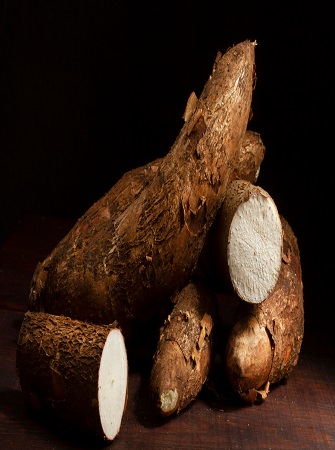
The future of cassava is likely to see, therefore, a shift to increased monocropping on larger fields, the widespread adoption of higher yielding genotypes that are more suited to industrialization, and higher rates of use of irrigation and agrochemicals.
A shift from traditional smallholder cassava farming systems – based on intercropping and periods of fallow to replenish soil nutrients – to more intensive monocropping may simplify management and favour initially higher yields. Experience has shown, however, that it also increases the prevalence of pests and diseases, and accelerates the depletion of soil nutrient stocks.
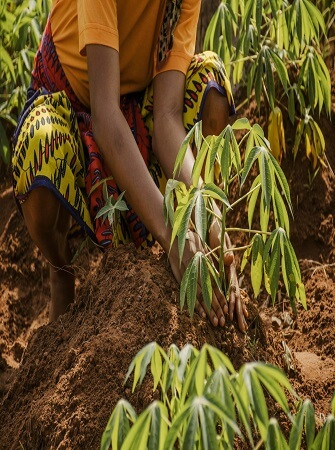
In southern Brazil, year-round demand for cassava for starch processing has led to continuous monocropping in the same field, overlapping planting dates, increasing use of genetically uniform varieties, and greater need for agrochemicals to maintain soil fertility and combat pests and diseases. In Rwanda, higher cropping densities under intensification have created pest and disease pressure that is negatively affecting yields. As warmer conditions start to favour intensive cassava production in new areas of Africa, Asia and South America, the risk of pest and disease problems is expected to increase.
With intensification, many of Africa’s cassava growers have eliminated fallow periods altogether and are not compensating for nutrient losses by adopting soil fertility management techniques, such as cover crops and manure application. Declining levels of soil nutrients lead to falling yields, to the point where production becomes unprofitable.
Recommended Cassava Farming Techniques
The United Nation's FAO has put together some farming practice systems for cassava farmers called Save and Grow which have shown promise in improving cassava yields. The “Save and Grow”, farming systems are founded on three key recommendation:
First, farmers should aim at protecting soil structure, soil organic matter and overall soil health by limiting mechanical disturbance of the soil. That means minimizing “conventional tillage”, the practice of ploughing, harrowing or hoeing land before every crop and during crop growth. Instead, farmers are encouraged to practise conservation tillage, which excludes operations that invert the soil and bury crop residues. Common forms of conservation tillage are strip or minimum tillage, which disturbs only the portion of the soil that is to contain the seed row or planting hole, and zero tillage, in which ploughing or hoeing are eliminated.
Second, farmers should maintain a protective organic cover on the soil surface, i.e. using crops and mulches to reduce soil erosion, conserve soil water and nutrients, and suppress weeds. Organic soil cover not only improves soil’s physical properties; it also encourages the proliferation of soil biota – including earthworms and beneficial protozoa, fungi and bacteria – that promote soil health and crop performance. In zero tillage systems, crops are planted directly through a mulch formed by the residues of previous crops or cover crops.
Third, farmers should cultivate a wider range of plant species in associations, sequences and rotations that may include trees, shrubs and pasture. Mixed cropping diversifies production, which helps farmers to reduce risk, respond to changes in market demand and adapt to external shocks, including climate change. Rotating or associating nutrient-demanding crops with soil-enriching legumes, and shallow-rooting crops with deep-rooting ones, maintains soil fertility and crop productivity and interrupts the transmission of crop-specific pests and diseases.
By improving levels of soil organic matter and biotic activity, reducing pest and disease pressure, reducing erosion and increasing the availability of crop water and nutrients, those three practices increase yields sustainably. They also lower production costs, mainly through savings on machinery, fossil fuel and external inputs such as irrigation, mineral fertilizer and pesticide.
Cassava Planting Methods: To Till or Not To Till?
Cassava needs a sufficiently loose-textured soil to facilitate initial root penetration and to allow for root thickening. It also succumbs easily to weed competition, excessive soil moisture and root rot. For those reasons, it is usually planted in soil that has been loosened and cleared of weeds by hoeing or ploughing. On degraded and unstructured soils, conventional tillage makes it easier to insert stakes in the ground and provides well-drained, aerated conditions for the root system.
However, crop yields are a function not of tillage, but of soil conditions. Cassava stakes can also be planted, and can produce good yields, in soil that has not been tilled, provided that the soil is healthy, well structured and free of compaction. Friable soils, high in organic matter, provide ideal conditions for zero-till cultivation. A study of smallholder cassava production in East and West Africa found that cassava was more frequently planted on seedbeds without prior land preparation than any other staple crop, except rice. Where soils had poor physical properties, farmers planted it on manually prepared mounds or ridges.
Continuous conventional tillage, especially when done with heavy, tractor-mounted ploughs, harrows and rototillers, buries the soil’s protective cover, kills soil biota, causes the rapid decomposition of organic matter, and degrades soil structure by pulverizing soil aggregates.
Ploughing or hoeing the soil at the same depth, season after season, often leads to the formation of a hardpan, a compacted soil layer – usually found below the topsoil – that is difficult for water and roots to penetrate. In such soils, some kind of mechanical loosening will be necessary for continued crop production, but at the cost of further soil degradation.

In that same soil, growing cassava without tillage may produce lower yields in the initial years. In the longer term, however, by reducing mineralization, erosion and water loss, helping to build up organic matter and maintaining soil aggregate stability and internal drainage, zero tillage promotes root functioning to the maximum possible extent. Once soil health is restored, untilled land can produce high yields and do so at a lower cost to both the farmer and the farming system’s natural resource base.
In countries where cassava is grown intensively on larger areas, of from 2 to 5 hectares, land is usually prepared by tractor using a mouldboard or disc plough, generally followed by the use of a disc harrow and sometimes a ridger. Alternatively, the soil is loosened and residues and weeds are incorporated with a rototiller. However, this method tends to pulverize the soil and can lead to serious erosion on sloping land.
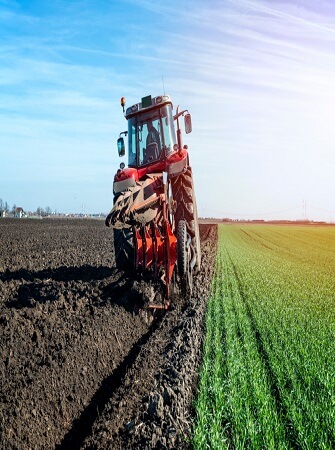
Many cassava farmers in southern Brazil practise conservation tillage. They generally grow a cover crop, such as black oats (Avena strigosa) or wheat, during the winter months to protect the soil surface, increase soil organic matter and suppress weeds. In the spring, before the cereal crop matures, they crush it with a tractor-drawn rolling drum, or kill it with herbicides, then plant cassava stakes with a mechanized planter directly through the mulch of the crop’s residues. In Paraguay, farmers practise hand-planting of cassava without tillage using black oats or leguminous shrubs as a winter cover crop.
In a land preparation trial conducted for four consecutive years in Thailand, the standard practice – ploughing twice with a 3-disc plough followed by a 7-disc harrow – produced the highest yields, while zero tillage consistently produced the lowest yields. In another Thai experiment, however, tillage did not result in significant yield differences. Using a subsoiler followed by a chisel plough, researchers obtained an average root yield of some 22 tonnes per hectare, compared to 20 tonnes when the land was not tilled and weeds were controlled with herbicide.
Also in Thailand, with nitrogen fertilizer applied at the rate of 100 kg per hectare, the fresh root yield of cassava grown under zero tillage reached 67 tonnes, significantly higher than the 53 tonnes obtained using conventional tillage.
In the second year, average yields from the unprepared plots fell to 49 tonnes, slightly less than the conventional tillage yield that year of 54 tonnes.
A study in Nigeria found that yields under conventional ridge tillage were up to 46% higher than those obtained in untilled fields, although zero tillage was practised by the majority of local farmers. However, the trial beds were planted at the height of the rainy season in June, when levels of soil moisture were higher and soil temperatures lower, which delayed the emergence of plants in the zero-tilled plots and led to a substantial number of rotten stems.
In fact, when planted at the onset of the rainy season, in March, cassava emergence was higher under zero tillage. Other trials in Cameroon and Nigeria have found that cassava yields were not affected by tillage; in the Democratic Republic of the Congo, yields were higher in untilled than tilled oxisols, and similar in sandy loam soil, provided the field was mulched.
Cassava growers should be encouraged to adopt minimum tillage and, ideally, zero tillage, especially on well-aggregated, friable soils with an adequate level of organic matter. Since yields do not depend on tillage per se, but on soil health, it is also recommended that, in tillage trials, changes in soil structure and organic matter under a zero-till regime be monitored closely, as those factors are likely to have a long-term positive impact on cassava yields and are good indicators of sustainability.
Even where conservation tillage produces lower yields, it offers farmers economic advantages: reduced spending on the fuel and equipment needed for conventional tillage, and – since it reduces soil erosion, conserves soil moisture and helps maintain soil health – the opportunity to produce cassava more intensively and sustainably, without the need for high levels of external inputs. Conservation tillage will also be important as an alternative to conventional tillage in cassava-growing areas affected by climate change. Where rainfall is reduced, it will help to conserve soil moisture; where rainfall increases, it will help reduce soil erosion and improve soil structure, allowing better internal drainage.
Cassava Cover Crops and Mulching
Maintaining a continuous ground cover is another basic “Save and Grow” practice that is also essential for reaping the full benefits of conservation tillage. Ground cover is especially important in cassava production – because the initial growth of cassava is slow, the soil is exposed to the direct impact of rain during the first 2 to 3 months of its growth cycle, and the wide spacing between planted stakes favours the emergence of weeds. To protect the soil surface, reduce runoff and erosion, and inhibit weed growth, “Save and Grow” recommendations include covering the soil surface with mulch, such as crop residues, or growing cover crops (also called “live mulch”) during fallow periods or during cassava establishment.
Mulching seedbeds is recommended especially when growing cassava on slopes prone to soil erosion. Cassava stakes can be planted directly through the mulch cover, with little or no land preparation. Mulch cover also serves as an insulating layer that reduces diurnal temperature variations and water evaporation, even during periods of prolonged drought. It increases the soil organic matter content and provides a favourable environment for soil micro-organisms and below-ground fauna. By improving physical soil conditions – reduced soil temperatures, higher levels of moisture, increased water infiltration capacity and lower evaporation – it favours higher yields.
In a 3-year trial in the Democratic Republic of the Congo, the application of 5 tonnes of rice straw on late season cassava led to an increase in soil pH, organic carbon content, total nitrogen, soil available phosphorus and soil exchangeable cations. Mulched cassava plants produced more and bigger storage roots than unmulched plants, and the dry storage root yield increased each year, from an average of 4.3 tonnes to 5.6 tonnes per hectare, irrespective of the cultivar used. In the first, second and third year, yields were 17%, 28% and 58% higher, respectively, than those of unmulched cassava.
Cassava Mixed Cropping
Although cassava is widely grown as a monocrop in Thailand and southern Brazil, intercropping is practised by smallholder cassava farmers in many parts of the tropics. Subsistence growers, or those with very limited areas of land, generally plant the space between cassava rows with early maturing crops, such as maize, upland rice and various types of grain legumes, including common beans, cowpeas, mungbeans and groundnuts. The practice has many benefits – it protects the soil from the direct impact of rain, reduces soil erosion from runoff, and limits weed growth during the early stages of cassava development.
Intercropping also produces crops that can be harvested at different times during the year, increases total net income per unit area of land, and reduces the risk of total crop failure. In south-western Nigeria, for example, maize and cassava are often planted in the first of two annual rainy seasons; the maize is harvested during a short break in the rains, after which the cassava continues alone. Since the two crops have different pest and disease complexes and growth requirements, one may survive even if the other fails. Some farmers even plant a second maize crop – cassava is less risky and the maize, if it succeeds, provides a bonus.
Growing cassava with short-duration grain legumes has an added advantage: it supplies both carbohydrates and protein, which provide the foundation of a healthy diet for the farming household. It has been estimated that one hectare of cassava intercropped with black common beans (Phaseolus spp.) can produce around 10 tonnes of fresh cassava roots with 30% starch and 600 kg of beans with 28% protein – enough to meet the annual requirements of five adults and leaving a surplus of about 6 tonnes of cassava for use as animal feed or for sale. When grown as a monocrop, cassava is usually planted with spacing of 1 m, making 10,000 plants per hectare.
Intercropping requires careful selection of the crops – and the most suitable varieties of each crop – to be planted, careful timing of planting, good fertilization, and optimum plant densities and distribution. In Nigeria, the success of maize/cassava combinations depends on the time and the rate of recovery of the cassava after the maize harvest. Research found that cassava root yields dropped from 31.6 tonnes per hectare to less than 20 tonnes with high densities of maize planting and maize yields that exceeded 3.5 tonnes.
In trials in Thailand, planting cowpeas (Vigna unguiculata) and sword beans (Canavalia gladiata) at the same time as cassava, over a period of four years, resulted in lower yields than when cassava was grown alone. However, moving the planting date three weeks after that of cassava reduced competition during cassava’s early growth stages, which allowed it to establish better and produce root yields exceeding those of the monocrop.
For more cassava farming information and insights, check our our Cassava Farming resource center. And if you're interested in the business of farming and processing cassava into garri, flour, starch and chips, you can get our cassava farming and processing business plan today.
[Ed.Note: Article references: Food and Agriculture Organization (FAO); International Institute of Tropical Agriculture (IITA)]
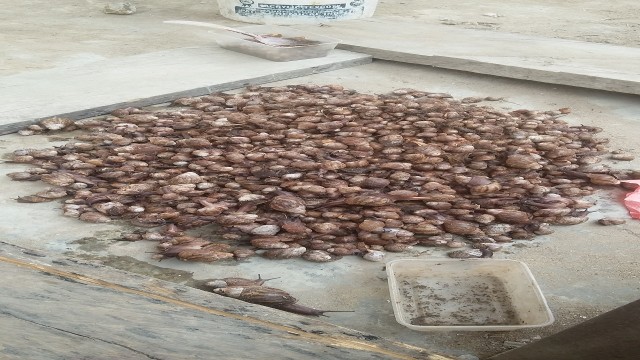
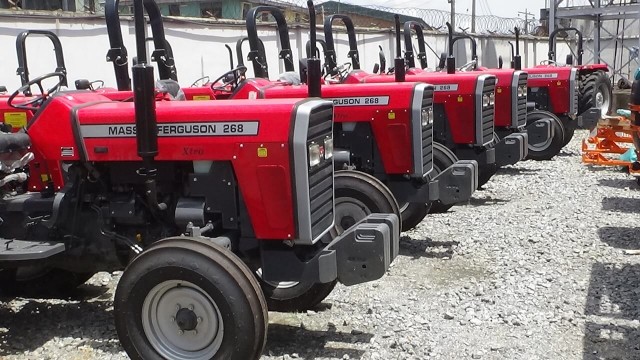




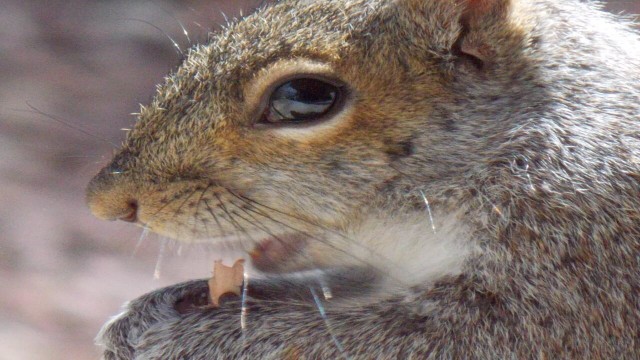
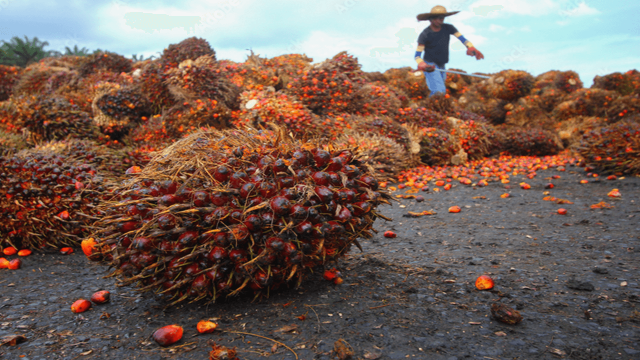
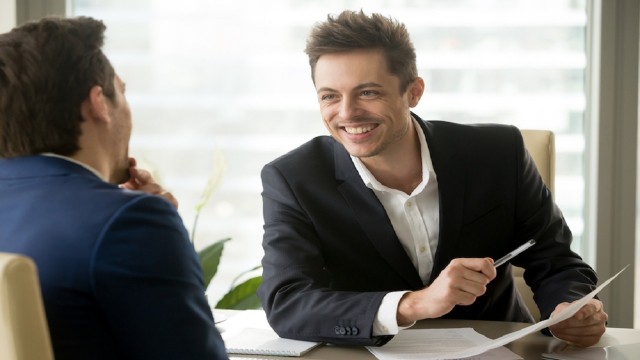
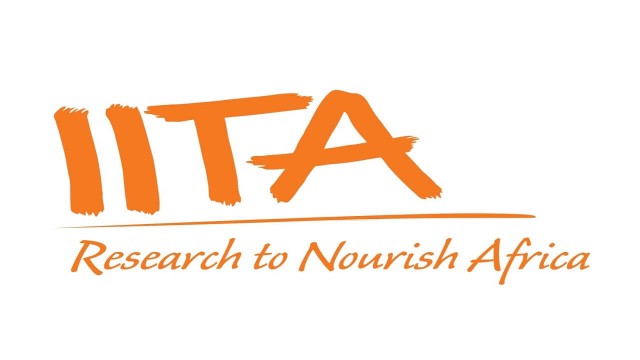
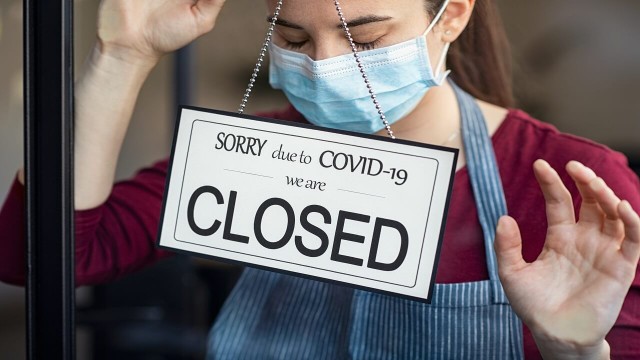
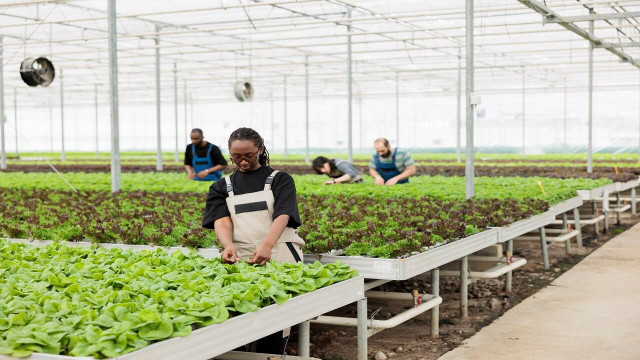
Share This Article: